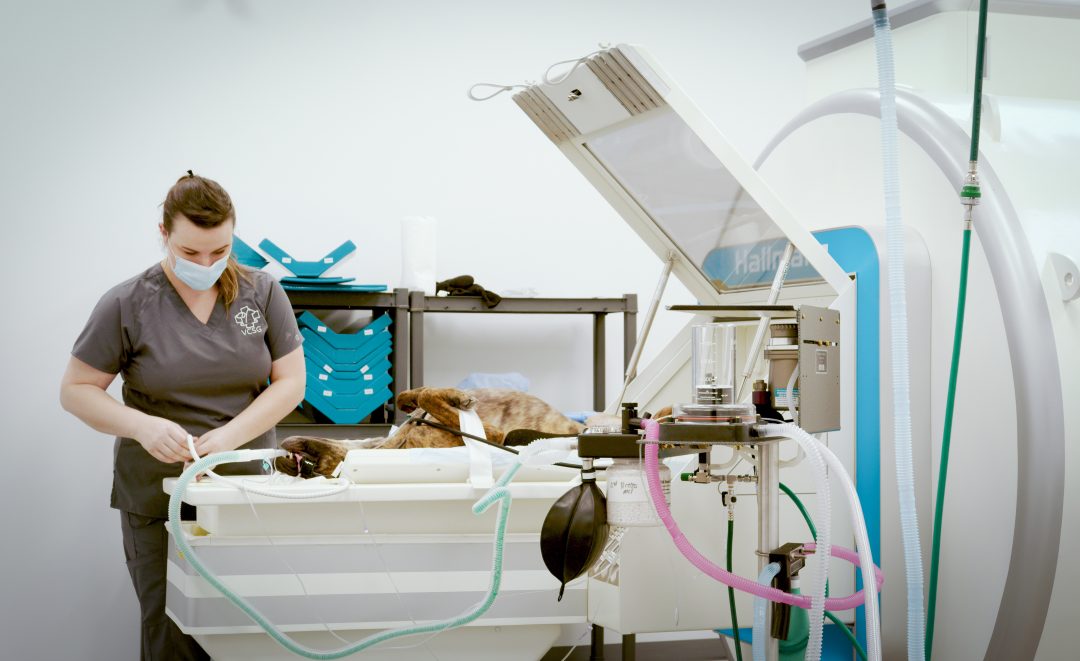Given the vast differences in canine anatomy across different breeds, dogs can present with an abundance of possible health problems. To determine the best course of action for your patients, referrals for veterinary MRI services are sometimes the best option for diagnosing and treating a dog.
Dog owners can’t make informed decisions for their pet’s care without an accurate diagnosis from their veterinarian. Although MRI can be an expensive test, they are covered by most insurance plans and can be important for getting to the root of canine patients’ health problems.
Here’s when you should refer a dog for veterinary MRI services.
Sooner Rather Than Later
If clinically recommended, and the pet owner will consider an MRI scan for their pet, then you should refer them as soon as possible. While there are other options, achieving a quick, accurate diagnosis is always the best course of action for realising the best chances of successful treatment.
You could start with other imaging techniques or treatment for the most likely cause, but these are not as definitive. If a dog presents with vision or behaviour changes due to severe inflammation in the brain, then a quick aggressive treatment could save the dog’s vision. But if the problems are allowed to continue or attempts are made to treat the symptoms without confidence or aggression, you could lose that window of opportunity.
And while you may still ultimately save the dog’s life, there could be permanent damage to the nervous system that might have been avoided with an immediate referral for vet MRI services.
When Investigations Have Struck Out
There are many avenues, such as blood tests, radiographs and infectious disease assessments, that first opinion practices can take in order to diagnose the cause of the dog or cat’s problems. However, if these more accessible testing methods present as normal or don’t provide enough detail for a diagnosis, a referral for vet MRI services should be the next step.
As an example, some smaller dog breeds such as Pugs, French bulldogs and English bulldogs, can suffer from bone malformations that may cause spinal deviations. These can press on the spinal cord, causing issues ranging in severity from mild (treatable with medicine) to severe (requiring surgical correction). Practitioners treating one of these breeds can make an educated guess as to the underlying cause, and the cause may be evident via X-ray or CT scan. However, the severity of the spinal deviation’s impact on the spinal cord cannot be determined without referring the patient for vet MRI services. Only after you know the severity can you make an informed decision regarding optimum treatment and care.
If You Need to ‘See’ the Nervous System
Dogs are prone to various neurological disorders that you must diagnose accurately before prescribing a treatment regimen. And no other imaging technique, whether X-ray, ultrasound or CT, reveals the nervous system with the quality or level of detail you’ll need to make the necessary diagnosis. Only MRI can help veterinarians accurately diagnose these types of diseases.
As an example, smaller breeds of dogs such as Chihuahuas and Cavalier King Charles spaniels are at risk of developing congenital central nervous system disorders such as Chiari-like malformation and or syringomyelia. These congenital neck and skull problems can cause intermittent pain or persistent scratching in the head or neck area. There are specific treatments, both medical and surgical, for these conditions. But before prescribing these treatments you have to identify which conditions are present and the level of severity. Since these disorders can only be accurately diagnosed by ‘seeing’ the central nervous system via MRI, toy breed dogs presenting with symptoms of Chiari-like malformation or syringomyelia are good candidates for referral.
If Treating Symptoms Fails
Many dog owners financially opt to treat symptoms before doing an extensive diagnosis. However, if the dog’s condition continues to deteriorate despite treating the symptoms, you will need to determine the underlying cause before proceeding.
As an example, you might begin treating seizures with anticonvulsant medications first. If the seizures don’t respond, you could increase the dosage of these anti-seizure drugs which often risks sedation and sometimes more concerning signs of toxicity. At this stage, we have to consider that a lack of response to medication may indicate the presence of underlying structural brain disease. An MRI scan helps provide a more accurate diagnosis, without which, treatment becomes a guessing game.
Because many pet owners don’t even realize that referrals for vet MRI services are possible, best practices dictate offering dog owners the option for an MRI referral at some point — and for many conditions, sooner is better than later.





